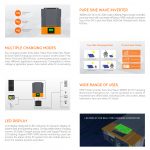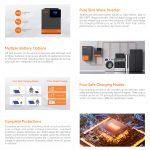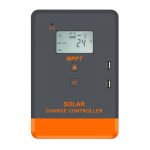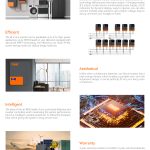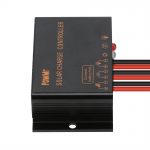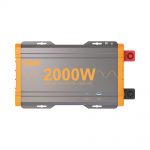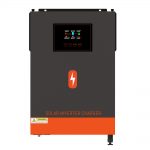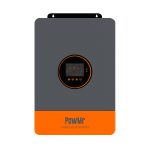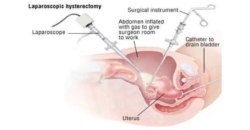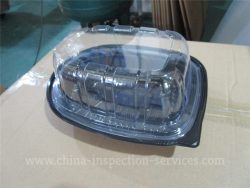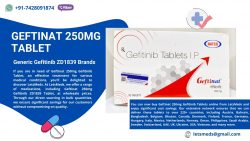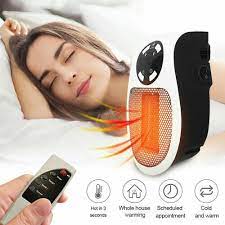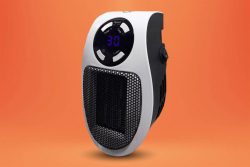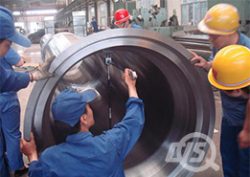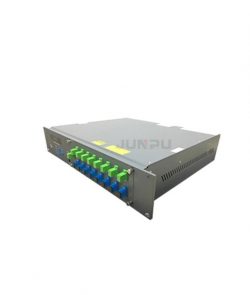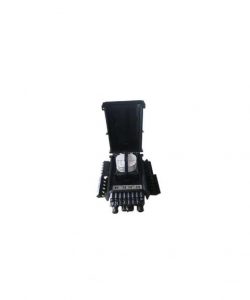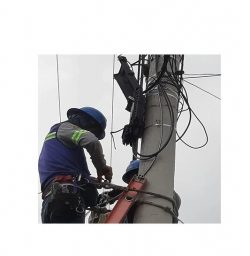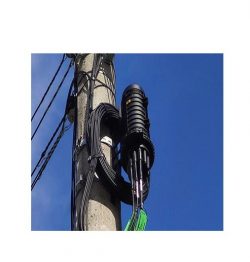Should choose a 10A charge controller
Having a power outage plan can be annoying. You might be planning to watch a movie at night. But when you get home, you find that the Hybrid Inverter battery is now dead, because it was used up during a prolonged power outage during the day. How do solar panel charge controllers work? The main job of a solar panel charge controller is to regulate the energy transferred from the solar panel to the battery.
They help to properly preserve the battery of the solar installation by preventing the battery from being under or overcharged, thus providing a long life battery. What is the best MPPT charge controller The best MPPT solar controller is the one that best fits your solar system and meets your battery or storage requirements. All the details you need to know about your PV system, such as input and output power, maximum battery current, nominal system voltage (12V, 24V, 36V, 48V, 60V, 100V, 150V, and 200V, etc.).
Modern 48V Inverter, such as solar inverters, have become very quiet so you won’t be woken up by noisy machinery while trying to sleep in your RV and charge your phone. Floating charging. The charging voltage (Uf) in floating charging mode is slightly lower than constant charging. The main purpose of this charging mode is to compensate for the self-lost energy of the battery, since at this stage the battery is fully charged. If you have frequent power outages in your home or office, a high-capacity inverter is your best option.
To run equipment such as heavy duty pumps, air conditioners, commercial establishments, and refrigerators, you can buy a high-capacity inverter or HKVA. HKVA or high capacity inverters are an efficient backup power solution that ensures low maintenance and high reliability while being an excellent alternative to polluting diesel generators. In this day and age, we have numerous appliances that make our daily lives easier. We rely on these machines for our household chores as well as domestic and professional requirements.
In fact, they can safely be called basic necessities. But what if they all stop working immediately? Scary, right? Always ensure that the inverter battery is placed in an open or ventilated area, which provides natural cooling air circulation to solve the problem of inverter battery heating. Do not use, store, or place inverter Solar Batteries in hot locations (such as near fires, near heaters, or in direct sunlight). Charging the batteries of a solar system is a daunting and unique challenge.
Previously, switching rules were used to limit battery outgassing once the solar panels produced excess energy. However, with the development of solar systems, the extent to which such devices interfere with the charging process has become clearer. Faced with this challenge, PWM solar charge controllers have emerged as the solution. In addition, sine wave inverters are fairly quiet, and connected load devices (such as fans, light bulbs, etc.) do not hum.
However, sine wave inverters are a bit cheaper than square wave variants. You need to install lighting inverters for the electrical equipment in your home to protect them from the unrestricted grid. powmr inverters are available in a variety of sizes and are manufactured with customer comfort in mind, making us one of the world’s leading inverter and battery companies. For the past three years, we at powmr have been working to provide you with safe and energy efficient solutions.
If you have a 36V battery pack installed in your solar system, you must buy the best 36V solar charge controller. I mean, the right equipment ensures your panel works at peak performance and gives you as much power as possible. While solar controllers are readily available, most controllers you can buy only support 12V or 24V battery systems, so if you happen to have a 36V or 48V battery installed, choosing a 36V solar controller is essential of.
When choosing a controller, please note that the discharge current of the solar panel cannot exceed this value, otherwise the controller will be damaged. So, when choosing a controller, we suggest that if the solar panel current is 6A, we should choose a 10A charge controller. The input voltage of the solar panel of the MPPT solar controller is generally about 0~150V, and the input voltage of the PWM solar controller is generally 0~55V. PWM solar charge controller technology.
Today, with more and more residential, commercial and even industrial sectors using solar energy, solar energy systems are becoming more popular than ever. As a result, the technology of solar photovoltaic cell charge controllers has evolved over the years. The most innovative technology is PWM charging, which has become very popular.

